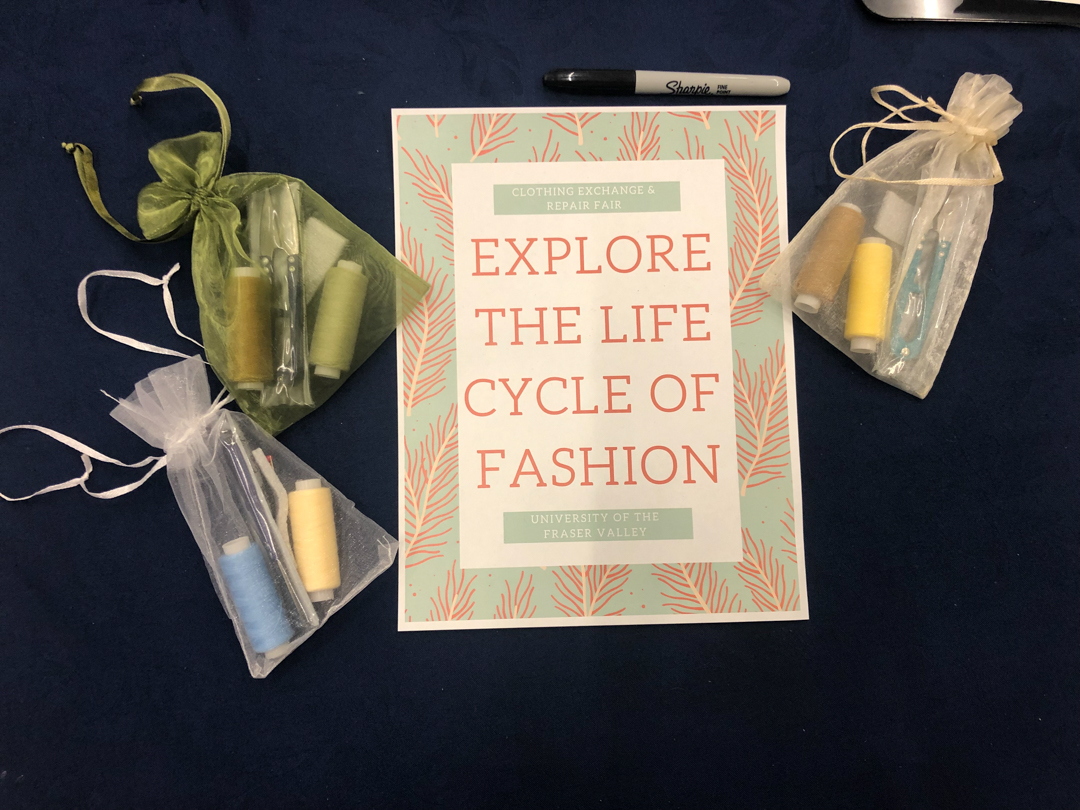There is no doubt that the fashion industry has a massive impact on climate change. The industry is responsible for 10 per cent of all human-induced greenhouse gas emissions and 20 per cent of all global water waste. With clothing being so cheap and easy to purchase online through apps like Shein or FashionNova, there are people who get rid of items after only wearing them a few times; one U.S. study found that 20 per cent of clothing bought is never even worn. Not to mention the social impacts of fast fashion; with clothes being so cheap to buy, imagine how little those who produce those clothing are getting paid. The average Bangladeshi garment worker earns just $95.50 a month, with evidence of forced labour and child labour in the garment industries of Argentina, Brazil, India, Thailand, and more.
The second event in the School of Land Use and Environmental Change’s March for Sustainability was a clothing exchange and repair fair held in Evered Hall on Wednesday, Mar. 9. The event featured various booths where students could learn how to make basic repairs on their clothes with the help of volunteers from Archway, learn how to use a sewing machine, and learn how to sew scrunchies and make tote bags with scrap fabric and clothing. There were also informational booths from the English department, WUSC, and the students of GEOG 300S: Sustainable Fashion.

Chio Yun, a professional stylist from OneBatchKimchi, was running the clothing exchange booth and giving students advice on how to thrift smart. Yun told The Cascade that Canadians acquire an average of 70 new items of clothing a year, and sustainable fashion is all about “working with what you already own and getting more creative with what is already in your closet.”
“My number one advice,” said Yun, “is to create connection[s] with others, to your friends, with family, because as much as it is easier to go buy at a store, to create a connection with someone else and to get clothes from them, that is the most sustainable, because that is preventing it from going into the landfill.”
When shopping at thrift stores, Yun advises students to “look for key pieces,” and shop with a plan. Go in with a budget and specific items that you are looking for that will pair well with other items of clothing that are already in your wardrobe. Have patience as well; shopping at thrift stores is about the thrill of the hunt, and you may not find anything you like on some trips, but on other trips you may find your new favorite item.
Stop buying clothes you don’t need, exchange clothes with your friends, wash your clothes less often, and when you want to get rid of your clothes, donate them to a thrift store instead of throwing them away so that someone else may enjoy them.
Check out the rest of UFV’s March for Sustainability events, including Early Earth Day on Mar. 16, a sustainability career panel on Mar. 23, and a professional designation information session on Mar. 30.
Andrea Sadowski is working towards her BA in Global Development Studies, with a minor in anthropology and Mennonite studies. When she's not sitting in front of her computer, Andrea enjoys climbing mountains, sleeping outside, cooking delicious plant-based food, talking to animals, and dismantling the patriarchy.


